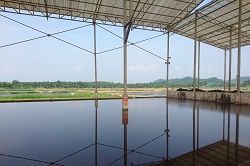Waste water treatment is not money down the drain
Scientists from the EU-funded R3WATER (Demonstration of innovative solutions for Reuse of water, Recovery of valuables and Resource efficiency in urban wastewater treatment) project worked with 12 partners, including SMEs, from seven European countries to develop technologies for more efficient recycling of waste water, recovering valuable materials from sludge and treating pharmaceutical residues. A dozen different technologies were developed or improved to upgrade treatment plants. ‘The idea is to support wastewater treatment plants to become more of a production facility for energy, nutrients and water for reuse rather than just treatment plants that avoid waste water emissions,’ says project coordinator, Uwe Fortkamp of the IVL Swedish Environmental Research Institute. Many of the technologies were demonstrated in treatment plants in Sweden, Spain and Belgium with some now ready for market, according to Mr Fortkamp. For example, Innowatt, a device developed by project partner the Catalan Institute for Water Research, uses software to gather real time and historical data on energy consumption patterns at a plant to optimise contracted power and save on costs. Water reuse The project scientists also developed an automated control system for disinfecting water flow in variable conditions. The amount of disinfectant such as chlorine and ultraviolet treatment can then be reduced to avoid overdosing, which can sometimes result in by-products, thus lowering costs and the environmental footprint. The demonstration projects in Sweden and Spain showed power consumption was reduced by up to 50 % during ultraviolet treatment using this trademarked ‘doscontrol’ process, says Klara Westling, a researcher at IVL. Neutralising pharmaceutical and microbial contamination Another technology, a fully-automated plug-and-play device developed under the project, uses software to create a dynamic fingerprint based upon the microbiological contaminants and debris in the effluent water. When the fingerprint deviates, the system automatically captures a water sample to be analysed to identify pathogens, providing constant monitoring and saving on the need for sampling and testing. With the long-term consequences for human health and ecosystems of exposure to pharmaceutical residues still unknown, ozone polishing safely removes most drug residues in the waste water and disinfects bacteria and other pathogens without the need for prior swift positive identification of each of the contaminants. The project team was able to further optimise both ozone treatment and treatment by activated carbon to provide more cost-efficient removal of pharmaceutical residues and other priority pollutants, keeping the ozone dose to a minimum. Recovering valuables At present, there is no energy efficient, environmentally-friendly and economically viable process for disposal and reuse of the 9 637 000 tons of municipal waste water sludge produced in EU countries each year. Spreading sludge on agricultural land is the cheapest disposal method, but ‘with very different regulations on how to handle the sludge, it is not an option in every country,’ Mr Fortkamp says. The project team also developed a treatment technology known as hydrothermal carbonisation (HTC), which results in better dewatering properties of the sludge and allows valuables such as phosphates to be recovered, while producing high quality biocarbon or activated carbon that can improve soil. With less water to evaporate, energy used during thermal drying is lower. Digesting breaks down one-third of the organic matter in the sludge, further lowering treatment costs. The phosphorus is extracted as phosphoric acid from HTC-treated carbonised sludge which can then be used as a fuel source for the cement industry.
Keywords
R3WATER, pollution, water, waste treatment, phosphorus, recycling, pharmaceuticals, energy-efficiency, contamination, ozone polishing, sewage



